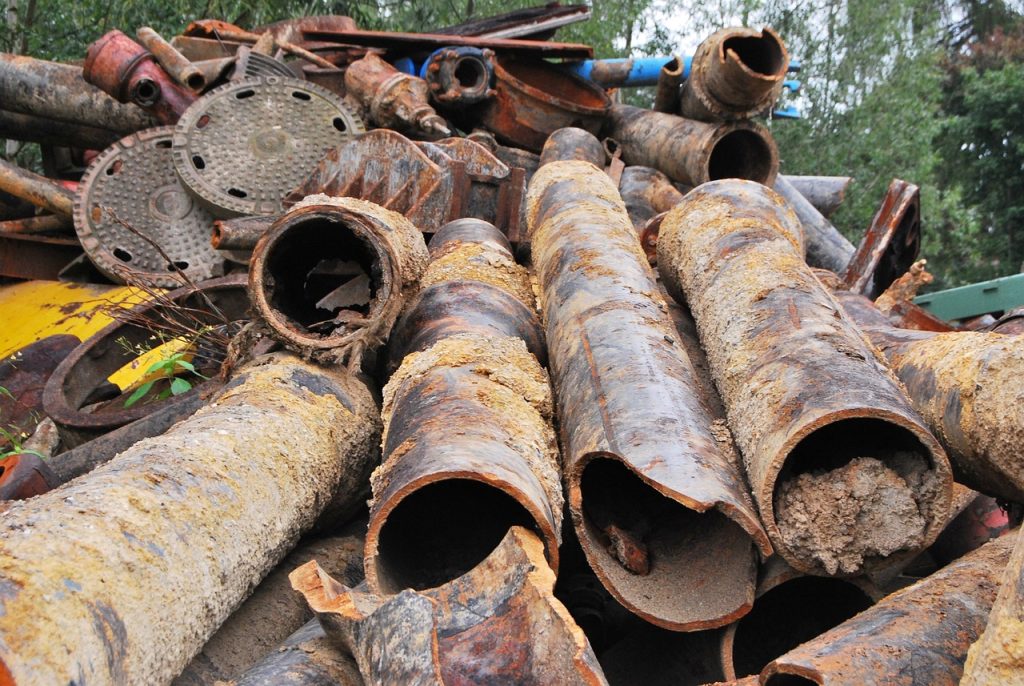- Check local regulations for mattress disposal.
- Find a mattress recycling center.
- Arrange for mattress pick-up or drop-off.
- Ensure the mattress is in acceptable condition.
- Separate mattress components for recycling.
Understanding the Waste Ban on Mattresses
When it comes to sustainable living and mattress care, understanding the waste ban on mattresses is critical. This ban is an initiative by the mattress recycling council to curb waste created by the disposal of old mattresses, as they are bulky items that take up significant space in our landfills. This initiative is a vital part of the green matters that influence waste management worldwide. Furthermore, it has been an encouraging step towards the much-anticipated Earth Day where people globally come together to promote eco-friendly practices.
Dealing with the municipal mattress waste problem involves adhering to the programs set forth by local authorities to recycle mattresses. These programs are essential for reducing waste and creating a healthier environment. These programs are set up to guide you on how to dispose of your old mattress correctly, either by picking it up for recycling or directing you to a nearby recycling facility.
Remember, participating in these local programs and learning how to recycle a mattress is not just for Earth Day – it’s a meaningful step towards sustainable living every day! Together, let’s decrease the waste, waste, and more waste, one mattress at a time.
Closer Look at Mattress Recycling: Gov Guidelines for Waste Ban
It’s crucial to have a closer look at mattress recycling and the gov guidelines for the waste ban. There’s an increasing public consciousness about going green, and recycling a mattress is seen as a logical response to this move. Old mattress disposal is a key part of the waste management triangle, right alongside reducing and reusing. Most people don’t know how to recycle a mattress, and that’s where local recycling programs come in handy. In many places, disposing of a mattress in a landfill is now against the law. This is due to a waste ban mandated by the government to reduce the environmental impact of such large, cumbersome items.
Even in areas where the waste ban isn’t yet in effect, there’s a growing awareness about the importance of recycling. Therefore, various local programs offer mattress recycling as an option. Such programs are instrumental in edifying the public about responsible disposal of waste and promoting recycling. Remember, it’s not just about recycling a mattress, it’s about making the whole concept of waste management a norm in society. So, let’s step up, get informed, and make responsible choices for a greener tomorrow.
Municipal Mattress Regulations: How to Recycle Mattresses
Understanding municipal mattress regulations is crucial if you’re planning to recycle or dispose of a mattress. Sure, most folks may not be aware of the role the local government plays in mattress recycling, but this is where the Mattress Recycling Council comes to play. This council’s primary responsibility is to guide mattress owners on how to properly recycle mattresses. They’re a handy resource for understanding the government guidelines relating to the waste ban on mattresses.
When you’ve decided to recycle a mattress, keep in mind that each municipality has different rules. If you’re unsure where to start, make a quick check with your local waste management organization for specifics on how to recycle bed components. Take the time to familiarize yourself with the mats and materials acceptable for recycling in your area to ensure proper disposal.
The aim here isn’t just to recycle mattresses; it’s to divert unnecessary waste from our landfills and promote a healthier planet. So, you’re not just getting rid of an old mattress; rather, you’re taking a step towards keeping our environment clean and safe. Remember, with each mattress recycling, we’re creating a sustainable future for all.
Understanding Mattress Regulations: Recycling Guidelines and Processes
If you’re wondering about the right ways to dispose of a mattress, you’re not alone. Mattress recycling has become a hot topic, given the waste ban on mattresses announced in several areas. It is essential to understand the role of the Mattress Recycling Council in creating guidelines for this. The council, a non-profit body, is committed to developing and executing mattress recycling programs.
Different regions have their own mattress recycling regulations, making it crucial for you to contact your local municipal office to check your area’s specific rules. They will guide you on recyclable components’ segregation, collection points, and recycling processes. Did you know recycling a single mattress can save an estimated 11 cubic feet of landfill space? It means, the more we recycle, the more we contribute to sustainability.
The mattress recycling process generally involves breaking the mattress down into its many components, such as foam, wood, and metal, and recycling each part separately. The more we participate in mattress recycling, the more we learn innovative ways of waste reduction, providing a greener and cleaner environment for the future.
Recyclable Materials in a Mattress: Maximizing Waste Recycling
Getting the most out of mattress recycling involves understanding the recyclable materials present in a mattress. These materials, when effectively handled, aid in maximizing waste recycling, ensuring a greener, healthier environment. Various materials, such as foam and other substances found in a mattress, can be recycled. Foam, especially, is often retrievable and reusable, making mattress recycling a smart choice for green-minded folks.
Recycling services play a crucial role in mattress recycling. They ensure that these materials are correctly identified, separated, and processed. By doing this, recycling services contribute to the green initiative, curbing unnecessary landfill accumulation. Recycling services also abide by municipal mattress regulations, established to promote and streamline mattress recycling procedures. These regulations and guidelines are essential for enforcing the waste ban on mattresses, further emphasizing the importance of recycling.
Recycling materials within a mattress not only aids in aligning with these regulations but also contributes to a larger goal- a greener planet. Therefore, maximizing waste recycling by focusing on recyclable materials in a mattress is essential. Thus, stay green by recycling that old mattress!
Steps to Break Down Recyclable Mattress Materials: Getting to the Recycled Parts
Let’s delve into the steps to break down recyclable mattress materials, separating the wheat from the chaff, collecting only the recycled parts. The mattress recycling process can seem daunting, but we’ll make it easier with this handy guide. Firstly, open up the PDF file provided by the local authorities. This English PDF will walk you through the necessary steps. The article continues by stating how important mattress disposal can be. Proper disposal saves space in landfills and lessens pollution.
Our next step is to break the mattress down. Commonly composed of recyclable materials – foam, fibre, and metal, mattresses pose a lucrative recycling opportunity. We can make use of these for waste recycling and dispose of the non-recyclable parts separately, adhering to municipal mattress regulations. Believe it or not, the recycling even includes the springs you sleep on.
Final thoughts: Mattress recycling is a responsible disposal method. It can improve our environment and people’s lifestyle by providing high-quality recycled materials; this is one of the effective ways we can make the world a better place. So, let’s not sleep on this! Make a commitment to mattress recycling today and help keep your local vicinity clean and green.
Places that Recycle Mattresses: Reducing Waste through Recycling
When you’re ready to recycle your mattress, it’s important to know the places that recycle mattresses to help reduce waste through recycling. This is a green solution that benefits both people and the environment. Many states across the United States offer various mattress recycling disposal services, helping to effectively manage the high volume of these items in our waste streams. Mattress recycling ensures that valuable, recyclable materials within these bulky items don’t end up in landfills.
Working within local and municipal mattress regulations is also critical. These regulations outline specific recycling and disposal processes and procedures. Mattress recycling involves breaking down the various materials and components for reuse. From springs, foam, to the wooden frame – each part can have a new life once it’s properly recycled.
By responsibly recycling our mattresses, not only do we limit unnecessary waste, we also get a good night’s sleep knowing we’ve done our part to contribute to a greener future. Remember, mattress recycling isn’t just about disposal, but maximizing the potential of each component to reduce, reuse, and recycle.
Role of Municipal Mattress Recycling in a Mass Waste Reduction
When it comes to mass waste reduction, municipal mattress recycling plays a crucial role. It’s important to understand that every mattress we recycle instead of dumping, plays a part in environmental conservation. This local recycling practice significantly reduces the volume of waste finding its way into our landfills. But how does this work exactly? First, you’ll need to contact your local waste management authority or recycling center. They’ll typically have guidelines in place for mattress recycling, but if they don’t, they can often direct you to a place that does.
It’s interesting to note that a single mattress has a surprising number of recyclable materials, from the springs to the padding. Once your mattress is at the recycling center, it’s broken down into these separate parts and then further processed or disposed of in the correct manner following environmental regulations. So, before you consider disposing of your mattress, remember there are benefits to recycling. Mattress recycling not only supports mass waste reduction but also contributes to conserving valuable resources. Contact your local recycling centers today and be part of the mattress recycling revolution.
How to Sleep Better: Investing in a Recyclable Mattress
Good sleep is heavily influenced by the comfort level of your mattress. Many people may not realize that the option of a recyclable mattress, like those made from foam, is not only environmentally friendly but also provides numerous sleep benefits. By investing in this mattress option, you make a firm stand for green practices while ensuring your sleep quality isn’t compromised.
Understanding the waste ban on mattresses and adhering to municipal mattress regulations are ways towards achieving mass waste reduction. When you invest in a recyclable mattress, you make it easier for recycling services to break down the materials for reuse post-disposal. This fact makes it an appealing choice for those committed to reducing their waste footprint.
The various components of a mattress, including foam, can be recycled effectively, thanks to effective waste ban guidelines and pinpointed recycling processes facilitated by municipal services. Recyclable materials in a mattress can be maximized, leading to less overall waste. Places that recycle mattresses play a significant role in making mattress recycling a tangible option for people nationwide.
In conclusion, a recyclable mattress makes a considerable difference in waste reduction while promoting better sleep for its users.
Recycled Mattresses and Better Sleep: Can a Recycled Mattress Improve Your Sleep?
Sleeping better is a common quest, and if you’re in the market for a new mattress, have you ever thought of opting for a recycled one? Recycled mattresses are becoming increasingly popular in our green-conscious society. The disposal of materials like metal springs, foam, and cotton filling doesn’t have to be problematic. Mattress recycling transforms these elements into reusable materials, turning “waste” into a wealth of eco-friendly possibilities.
Recycled mattresses don’t just contribute to a reduced carbon footprint – they can also improve your sleep. The emphasis on mattress recycling has led manufacturers to put more thought into creating sleep aids designed to enhance comfort with recyclable materials. Therefore, these recycled mattress resources, previously destined for disposal, offer a promising innovation in sleep technology. For the green-conscious sleeper, investing in a recycled mattress carries guarantees of sustainability.
Before you dispose of your used mattress, find out about municipal mattress recycling rules and places that recycle mattresses. This way, our mass waste reduction efforts can have a broader impact. Indeed, with these disposal and recycling guidelines, sleeping greener is no longer a dream.
Waste Ban’s Impact on Mattress Discards: Understanding the Importance of Mattress Recycling
The waste ban on mattresses has initiated a major shift in how we view and dispose of our mattresses. With the growing importance of mattress recycling, we must understand the critical role it plays in waste management, reducing landfill usage, and resource optimization. As per the government’s guidelines supporting the waste ban, several new regulations are now in place. Municipal mattress recycling regulations, for instance, now encourage citizens to recycle rather than discard their old mattresses.
This waste ban also dictates how we should break down recyclable mattress materials, putting an emphasis on finding the recycled parts and maximizing waste recycling. In fact, finding a place that recycles mattresses is not as difficult as one might think, thanks to the increase in entities that have embraced the concept of recycling. A variety of materials within a mattress are recyclable, including springs, foam, and even pillows.
This shift has also led to innovative ideas such as investing in a recyclable mattress, offering a win-win solution for both consumers and the environment. Final thoughts on this would be that this paradigm shift can possibly lead to better sleep quality because recycling mattresses reduces waste, contributing significantly to mass waste reduction.




